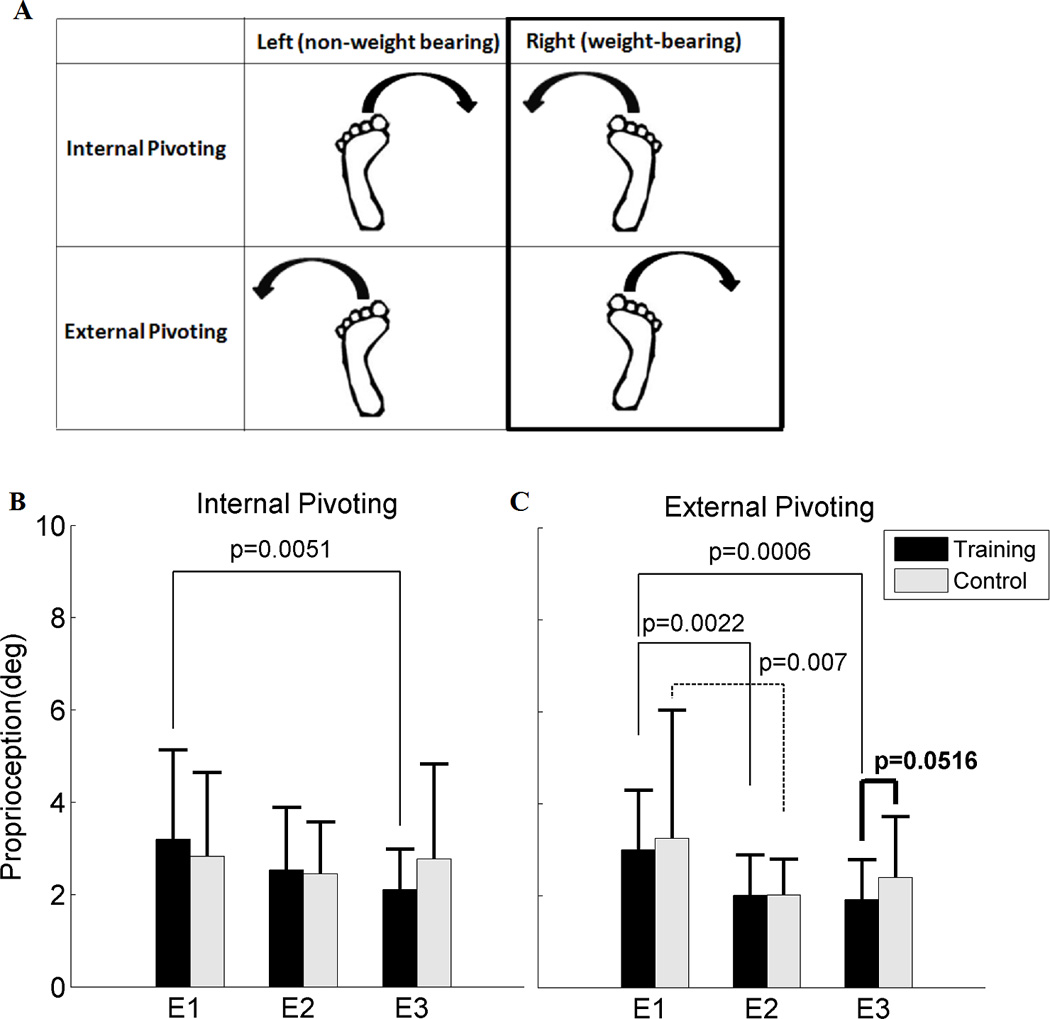Figure 2.

A: Four possible pivoting passive motions in proprioception tasks. The weight-bearing conditions as indicated as the black bold line box were reported for B and C. B: Proprioception (deg) in internal pivoting, and C: Proprioception (deg) in external pivoting under weight-bearing between the training and the control groups. Each bar indicates mean with 1SD between the training group (black color) and the control group (gray color) at each evaluation (N=20 in the training group (T), N=20 the control group (C) at E1, N=20 (T), N=20 (C) at E2, and N=21 (T), N=19 (C) at E3). E1, E2 and E3 denote the first, second and third evaluations, respectively. The bold black line indicates the p value between the training group and the control group at each evaluation. The black line indicates the p value between evaluations (E1 and E2, or E1 and E3) within the training group and the black dotted line indicates the p value between the evaluations within the control group.
